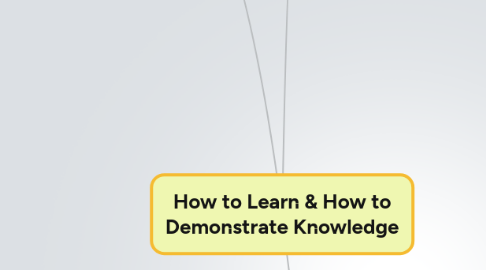
1. Writing a Research Paper
1.1. introduction
1.1.1. takes practice
1.1.2. summary of conents
1.1.2.1. Genre
1.1.2.2. Choosing a Topic
1.1.2.3. Identifying an Audience
1.1.2.4. Where do I start?
1.2. Genre & the Research Paper
1.2.1. What it is
1.2.1.1. critical thinking, source evaluation, organization and composition
1.2.1.2. prim & sec sources
1.2.1.3. something to increase knowledge
1.2.2. What it is not
1.2.2.1. informed summary
1.2.2.2. book report
1.2.2.3. opinion piece
1.2.2.4. essay
1.2.2.5. overview
1.2.3. 2 major types
1.2.3.1. Argumentative
1.2.3.1.1. introduction with clear stance on subject
1.2.3.1.2. thesis statement
1.2.3.1.3. persuasion
1.2.3.1.4. examples
1.2.3.2. analytical
1.2.3.2.1. research question
1.2.3.2.2. exporation and evaluation
1.2.3.2.3. examples
1.2.3.2.4. thesis statement
1.3. Choosing a Topic
1.3.1. intorduction
1.3.2. topic
1.3.2.1. situation 1
1.3.2.1.1. own idea
1.3.2.1.2. instructor topic list
1.3.2.2. situation 2
1.3.2.2.1. choice of any topic
1.3.3. methods
1.3.3.1. thinking early = starting early
1.3.3.2. brainstorming
1.3.3.2.1. get idea on paper
1.3.3.2.2. helps narrow topic
1.3.3.2.3. write in lists or bullets
1.3.3.3. topic may change with research
1.3.4. Help - purdue OWL
1.3.4.1. understanding writing assignments
1.3.4.2. prewriting
1.3.4.3. starting the writing process
1.3.4.4. invention slide presentation
1.4. Identifying an audience
1.4.1. inforduction
1.4.2. treat like oral presentation
1.4.3. pick an audience that would be interested/benefit in your paper
1.4.4. example
1.4.5. questions to help decide
1.5. Where do I begin?
1.5.1. introduction
1.5.1.1. no temple/shortcut
1.5.2. research
1.5.2.1. research: overview page
1.5.2.1.1. what kind of information are you looking for?
1.5.2.1.2. where would be a likely place to look?
1.5.2.1.3. how much information do you need?
1.5.3. 4 main components for outlines
1.5.3.1. parallelisim
1.5.3.1.1. heading and subheadings (verb/verb)
1.5.3.1.2. example
1.5.3.2. coordination
1.5.3.2.1. same significance in headings
1.5.3.2.2. example
1.5.3.3. subordination
1.5.3.3.1. heading = general
1.5.3.3.2. subheading = more specific
1.5.3.3.3. example
1.5.3.4. division
1.5.3.4.1. divided into 2 + parts
1.5.3.4.2. example
1.5.4. drafting
1.5.4.1. inforduction
1.5.4.1.1. research question
1.5.4.1.2. thesis statement
1.5.4.1.3. no purpose or direction
1.5.4.2. writing takes time
1.5.4.2.1. plan ahead / know due date
1.5.4.2.2. its a process
1.5.4.2.3. pre-writing
1.5.4.2.4. plan time
1.5.4.3. rhetorical elements = guide
1.5.4.3.1. know your elements
1.5.4.3.2. start broad
1.5.4.3.3. example questions
1.5.4.3.4. example
1.5.4.4. mindful of purpose
1.5.4.4.1. examples
1.5.4.5. pre-writing strategies
1.5.4.5.1. start writing!
1.5.4.5.2. do worry about anything, just get info on the paper
1.5.5. revising, editing, proofreading
1.5.5.1. revising
1.5.5.1.1. cleaning up paper
1.5.5.1.2. word choice
1.5.5.1.3. removal of infomation
1.5.5.1.4. rethink and rework
1.5.5.2. editing
1.5.5.2.1. analysis of tone/voice
1.5.5.2.2. correct errors
1.5.5.2.3. evaluation of flow
1.5.5.3. proofreading = final stage :)
1.5.5.3.1. general stratgies
1.5.5.3.2. personalizing
2. Reading a Research Paper
2.1. the art of skimming & scanning
2.1.1. read the abstract
2.1.2. read the introduction
2.1.3. read the conclusion
2.1.4. skim over the middle
2.1.4.1. section titles
2.1.4.2. tables
2.1.4.3. figures
2.1.5. figure out style & flow of article
2.1.5.1. methodological
2.1.5.2. conceptual
2.1.5.3. theoretical
2.1.5.3.1. verbal
2.1.5.3.2. mathematical
2.1.5.4. empirical
2.1.5.5. something else
2.1.6. reread article quickly & skip
2.1.6.1. eduations
2.1.6.2. figures
2.1.6.3. tables
2.1.7. read carefully
2.1.7.1. focus on sections of importance
2.2. critique article
2.2.1. does it make sense
2.2.1.1. internally consistent?
2.2.1.2. well supported?
2.2.1.2.1. argument
2.2.1.2.2. evidence
2.2.2. compare to other articles
2.2.3. no other articles read?
2.2.3.1. find articles skim them
2.2.4. google scholar
2.2.5. check reference work
2.2.5.1. survey article
2.2.5.2. handbook
2.2.5.3. encyclopedia
3. Academic Integrity
3.1. what is plagiarism
3.1.1. taking credit for someone elses work
3.1.2. if you get caught
3.1.2.1. failing grade for assignment
3.1.2.2. failing grade for the class
3.1.2.3. kicked out of school
3.1.3. your guilty
3.1.3.1. buy paper online
3.1.3.2. use an old paper
3.1.3.3. not correctly citing scorces
3.1.3.3.1. copy/paste
3.2. how to cite work
3.2.1. foot notes
3.2.1.1. format
3.2.2. citation
3.3. the cite is right
3.3.1. examples/questions
